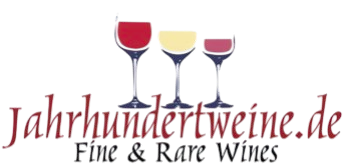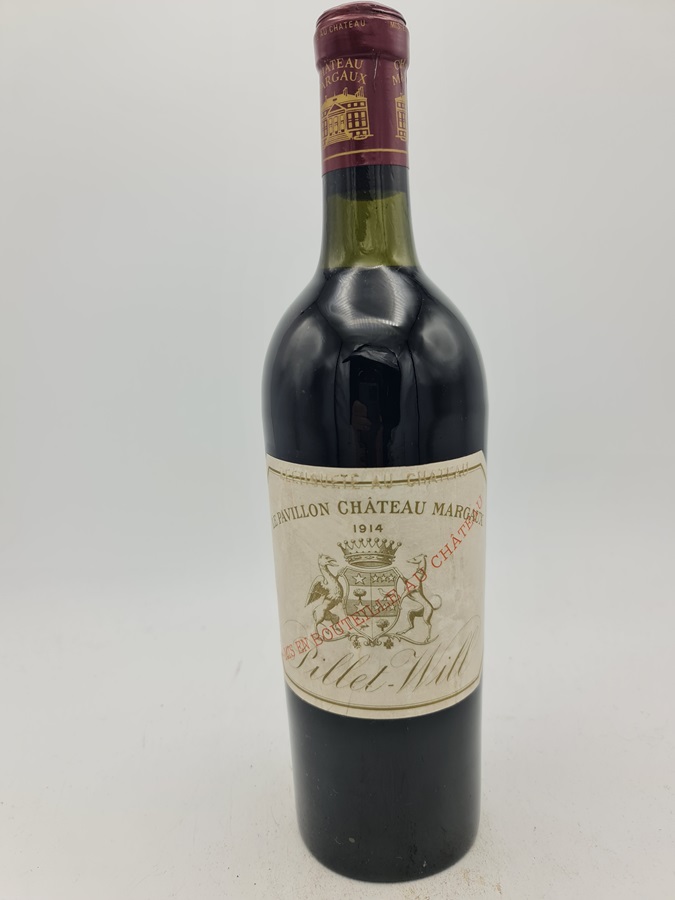Château Margaux 1914 'rebouchage au Château'
€5,950.00*
1 Available immediately
Filling level top shoulder, capsule and label good.
Product information
Report: Château Margaux 1914 - A bottle of history
1. introduction & winery:
Château Margaux, one of the five Premier Grand Cru Classé estates of the Médoc (Left Bank, Bordeaux), is synonymous with graceful, fragrant and extremely long-lived wines. The 1914vintage coincides with one of the most dramatic periods in Europe - the beginning of the First World War. This makes it a rare historical artefact.
2. the 1914 vintage in Bordeaux:
Climate: An average vintage with no extreme weather events, but overshadowed by the start of the war in August. The mobilisation of France hit the grape harvest in autumn.
Challenges:A lack of labour (men at the front), logistical problems and a shortage of materials characterised the harvest and vinification. The quality of the grapes was solid, but not exceptional.
Special feature: Wines from this vintage are extreme rarities today and are valued less for their sensory qualities than as historical witnesses.
3rd sensory description (to be enjoyed with extreme caution):
Note: Tastings of a 110-year-old bottle are extremely rare and highly dependent on storage conditions. The following information is based on isolated historical reports and general knowledge of very old Bordeaux.
Colour: Expect a pale, brownish brick red to mahogany, typical of extremely mature red wines. Clarity is fragile.
Nose: Dominance of tertiary aromas: forest floor, truffle, old leather, tobacco, damp cigar box, mushrooms, possibly a hint of dried violets or plums. The primary fruit has been gone for decades. Acidity and alcohol can become noticeable as a vinegar note if the wine is overripe.
Palate: Expect a light bodywith minimal residual tannin structure. The flavour should be characterised by earthy, mushroomy and mineral notes (graphite). The acidity is decisive for any liveliness - if it has evaporated, the wine will appear flat or oxidised. The length is surprising in intact bottles, but completely different from young wines.
Condition: Even when perfectly stored, a wine from 1914 is beyond its drinking plateau. It can still be tasted as a curiosity or historical experience.
4. historical context & significance:
War harvest:The grapes were harvested shortly before or during the general mobilisation. The mood was characterised by uncertainty and patriotism.
Survival miracle: The fact that bottles from this vintage exist at all is remarkable. They have survived two world wars, economic crises and often sub-optimal storage conditions.
Museum value: An original, well-documented bottle of Château Margaux 1914 is a museum object. Its value lies in its provenance and its role as a silent witness to a lost world.
5. price & availability:
Priceless rarity: bottles appear extremely rarely at specialised auctions (e.g. Acker Merrall & Condit, Sotheby's) or from private collections.
Price: Beyond classic market prices. The value is determined by provenance, storage history and condition of the cork/label. Intact bottles with impeccable provenance can reach five-figure euro amounts or significantly more - as a collector's item, not as a drinking wine.
6. famous tastings (rare!):
Isolated notesdescribe the wine (with intact bottles) as surprisingly lively for its age, with classic Margaux grace in the nose (faded violets, cedar), but dominant ageing character. Acidity and alcohol often hold up better than expected.
Michael Broadbent (legendary wine writer)mentioned sporadic encounters with the vintage in his books, often referring to its fragility and historical fascination.
7 Conclusion:
Château Margaux 1914 is not a wine in the conventional sense, but a piece of living history.
For enjoyment:At best a curiosity for absolute experts seeking the flavour of age and history. Realistic expectations are essential - it is no longer a "great" wine in the sensory sense.
For the collector: A jewel of wine history, its ownership is a tribute to the endurance of the wine and the destiny of the vintage. It symbolises the strength of the terroir even under the most adverse conditions.
As an experience: opening such a bottle is a ritual act of remembrance of the world of 1914 - a world on the brink.
Key message:
The value and any possible sensory experience depend absolutely critically on unbroken, cool and dark storagesince 1914. Any bottle without perfect provenance is highly unlikely to be drinkable. Counterfeiting is a serious problem with such rarities.

|
Alcohol: | 14 |
|---|---|---|

|
Colour: | red |

|
Country: | France |

|
Filling quantity: | 750 ml |

|
Flavour: | dry |

|
Grape variety: | Cabernet Sauvignon, Cabernet Franc, Merlot |

|
Product type: | Wine |

|
Region: | Bordeaux |

|
Type of wine: | Red wine |

|
Vintage: | 1914 |

|
Producer: | Château Margaux |
Log in
Allergens: Sulphites
Bottler: Producer









